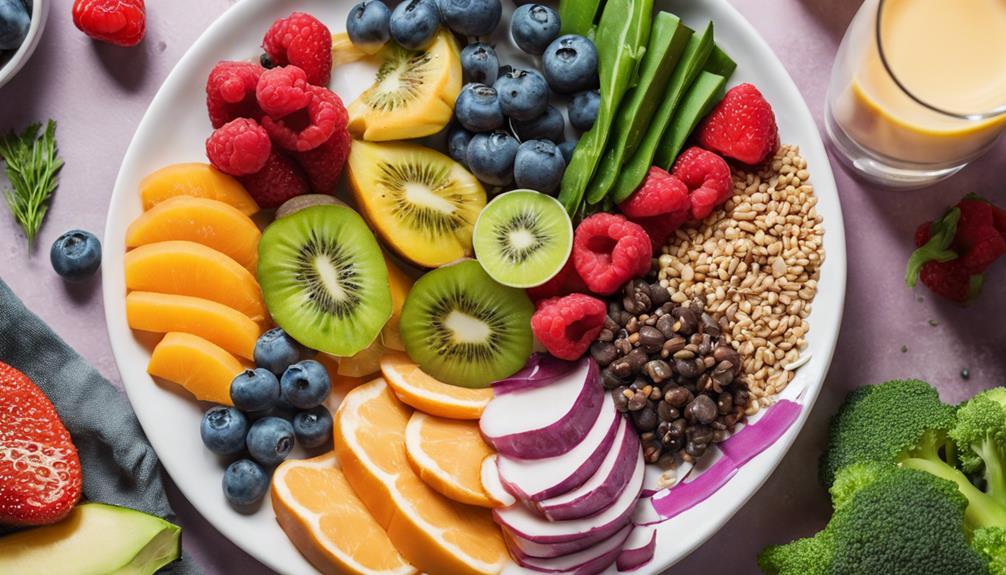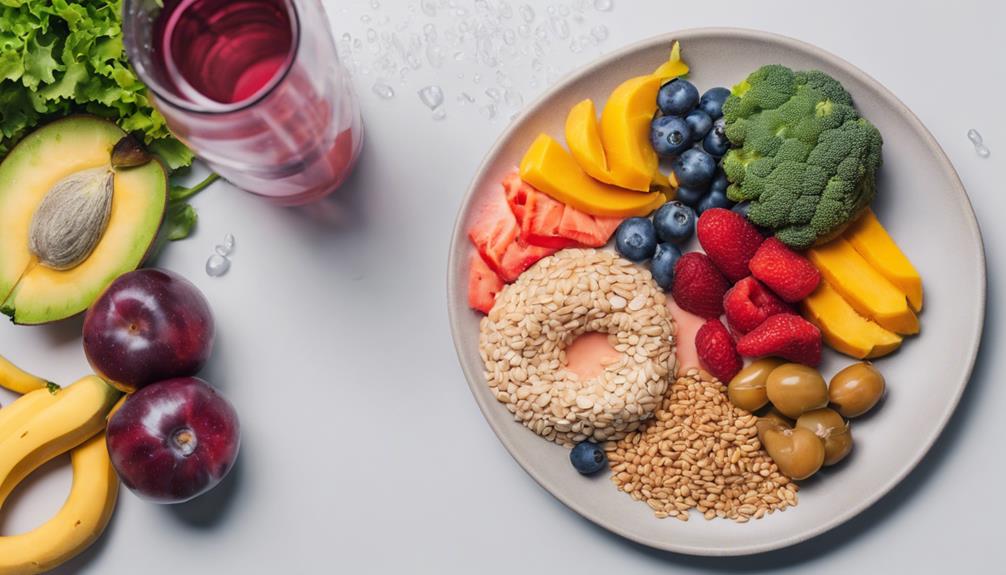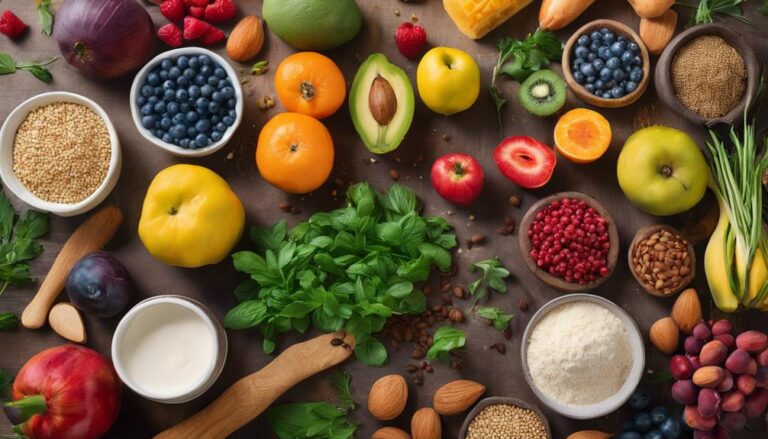How to Create a Balanced Meal Plan for Women’s Health
When it comes to crafting a balanced meal plan for women's health, striking the right mix of nutrients can be a crucial step towards overall well-being. But how do you navigate the sea of choices to ensure you're meeting your body's unique needs? By focusing on key food groups and portion sizes, you can lay the foundation for a diet that supports your energy levels, hormone balance, and vitality. Ready to unlock the secrets to a nourishing meal plan that empowers your health goals?
Understanding Women's Nutritional Needs
When it comes to understanding women's nutritional needs, it's crucial to recognize that females often have unique requirements compared to men. Hormone balance plays a significant role in women's health, affecting everything from metabolism to mood. Nutrient absorption is another key factor to consider, as women may have specific needs due to menstruation, pregnancy, or menopause.
For example, during menstruation, women may experience a decrease in iron levels, leading to fatigue and anemia if not addressed through dietary intake or supplements. Additionally, during pregnancy, the need for nutrients like folic acid and calcium increases to support the developing fetus and the mother's changing body.
Ensuring a diet rich in a variety of nutrient-dense foods is essential for maintaining hormone balance and optimal nutrient absorption. Incorporating foods like leafy greens, legumes, lean proteins, and whole grains can help support women's unique nutritional needs throughout different stages of life. Remember to consult with a healthcare provider or a registered dietitian for personalized recommendations based on individual requirements.
Choosing a Variety of Foods
Understanding women's nutritional needs lays a solid foundation for creating a balanced meal plan that promotes overall health and well-being. When choosing a variety of foods, it's essential to consider incorporating a wide range of food groups to ensure adequate intake of essential nutrients. Aim for dietary diversity by including fruits, vegetables, whole grains, lean proteins, and healthy fats in your meals. Each food group provides unique vitamins, minerals, and antioxidants that contribute to overall health and well-being.
Dietary diversity is key to obtaining a wide array of nutrients that support various bodily functions. By including foods from all food groups in your meal plan, you can ensure that you're meeting your body's nutritional needs. Experiment with different recipes and ingredients to keep your meals interesting and nutrient-dense.
Incorporating Lean Proteins
To ensure a well-rounded and balanced meal plan for women's health, incorporating lean proteins is essential. Lean proteins are crucial for maintaining muscle mass, regulating hormones, and supporting overall health. Including a variety of protein sources such as skinless poultry, fish, tofu, legumes, and low-fat dairy can help you meet your daily protein needs while keeping your meals interesting and flavorful.
When planning your meals, consider incorporating different protein sources throughout the day. For example, you could have grilled chicken for lunch and lentils for dinner to ensure a diverse intake of essential nutrients.
Meal prep strategies can also help you incorporate lean proteins into your diet more effectively. Prepare protein-rich snacks like Greek yogurt with nuts or hard-boiled eggs in advance to have nutritious options readily available when hunger strikes.
Prioritizing Fruits and Vegetables
Prioritizing fruits and vegetables in your meal plan is key to promoting optimal health and well-being. Colorful produce not only adds vibrancy to your plate but also signifies a diverse range of nutrients essential for your body's functions. Here's why you should prioritize fruits and vegetables:
- Nutrient Density: Fruits and vegetables are packed with essential vitamins, minerals, and antioxidants that nourish your body and support overall health.
- Fiber-Rich Choices: They're excellent sources of dietary fiber, promoting digestive health and aiding in weight management.
- Hydration Support: Many fruits and vegetables have high water content, contributing to your daily hydration needs.
- Disease Prevention: Regular consumption of a variety of fruits and vegetables has been linked to a reduced risk of chronic diseases, such as heart disease and certain cancers.
Including Whole Grains
Fruits and vegetables form the foundation of a nutritious meal plan, offering a plethora of health benefits. When it comes to including whole grains in your diet, opt for whole grain options like brown rice, quinoa, whole wheat pasta, and oats. Whole grains are rich in fiber, vitamins, and minerals, promoting digestive health and providing sustained energy.
Consider practicing portion control when incorporating whole grains into your meals. The table below offers guidance on recommended serving sizes for common whole grain options:
| Whole Grain | Recommended Serving Size |
|---|---|
| Brown Rice | 1/2 cup cooked |
| Quinoa | 1/2 cup cooked |
| Whole Wheat Pasta | 1/2 cup cooked |
| Oats | 1/2 cup cooked |
Monitoring Portion Sizes
When it comes to maintaining a balanced meal plan, one crucial aspect to consider is monitoring portion sizes. Portion control plays a significant role in managing weight and ensuring adequate nutrient intake. Here are some tips to help you keep your portions in check:
- Use smaller plates: Opt for smaller plates to help control portion sizes visually. This can prevent overeating and promote better portion control.
- Measure your food: Utilize measuring cups or a food scale to accurately portion out foods like grains, proteins, and fats. This can help you stay within recommended serving sizes.
- Fill half your plate with vegetables: Vegetables are low in calories and high in nutrients. By filling half your plate with veggies, you can naturally limit portions of higher-calorie foods.
- Be mindful of healthy fats: While healthy fats are essential for overall health, they're calorie-dense. Be mindful of portion sizes when consuming foods like nuts, seeds, avocados, and oils.
Staying Hydrated
Ensuring adequate hydration is a fundamental aspect of maintaining overall health and well-being. Hydration tips can help you stay on track with your water intake. As a woman, your body's water needs may vary based on factors like activity level, climate, and overall health.
A general guideline is to aim for about 11.5 cups (2.7 liters) of fluids per day from both beverages and food. Water intake suggestions include drinking water throughout the day, especially before meals to help with portion control and hydration. You can also include hydrating foods like fruits, vegetables, and soups in your meal plan.
Monitoring your urine color is a simple way to check your hydration status – aim for a pale yellow color. Remember, staying hydrated not only supports your bodily functions but also contributes to healthy skin, digestion, and overall well-being. By incorporating these hydration tips into your daily routine, you can ensure you're meeting your body's water needs effectively.
Frequently Asked Questions
Can I Include Occasional Treats in a Balanced Meal Plan?
You can include occasional treats in a balanced meal plan by indulging responsibly with a moderation mindset. Enjoying small portions of your favorite treats can be a part of a healthy eating pattern without sacrificing overall nutrition.
How Can I Adjust My Meal Plan for Different Activity Levels?
Adjust your meal plan based on activity levels. For sedentary lifestyles, focus on portion control and nutrient-dense foods. For active individuals, increase carbohydrate and protein intake to support energy needs. Always listen to your body and practice intuitive eating.
Is It Necessary to Take Supplements on a Balanced Diet?
You don't necessarily need supplements with a balanced diet. However, for specific deficiencies, they can be beneficial. Cheat days can offer mental relief but shouldn't compromise overall nutrient intake. Always consult a healthcare provider for personalized advice.
Can I Still Enjoy Social Outings While Following a Meal Plan?
You can absolutely enjoy social outings while following a meal plan. Make smart choices by opting for healthier options on the menu and adjusting portion sizes. With planning and flexibility, you can still indulge in dining out without breaking your balanced diet.
How Do I Account for Dietary Restrictions in a Balanced Meal Plan?
When planning meals, consider allergen substitutions and customized modifications for dietary restrictions. Include a variety of nutrient-dense foods to meet your needs. Consult a dietitian for personalized guidance to ensure your meal plan is balanced and supportive of your health goals.
Conclusion
Now that you have learned how to create a balanced meal plan for women's health, remember to prioritize lean proteins, fruits, vegetables, and whole grains in your daily meals. By incorporating a variety of nutrient-dense foods and practicing portion control, you can support your overall well-being and nutritional needs. Remember, a well-balanced diet is key to feeling your best and achieving optimal health – it's like giving your body a supercharged fuel for life!













